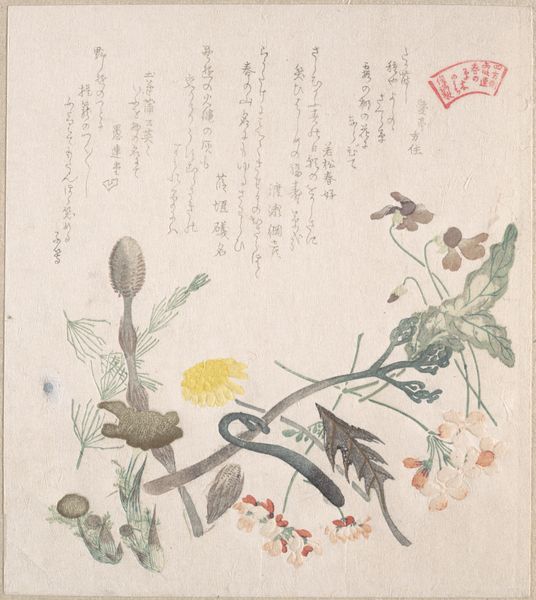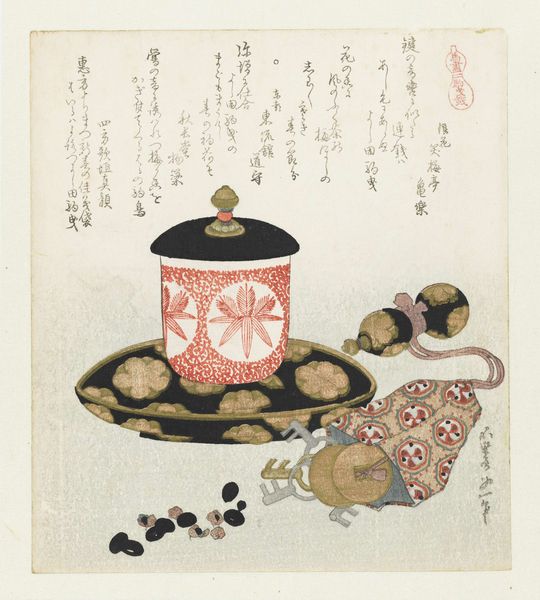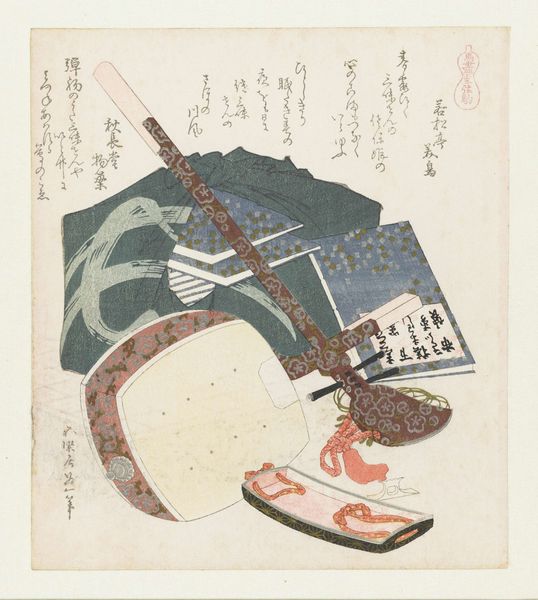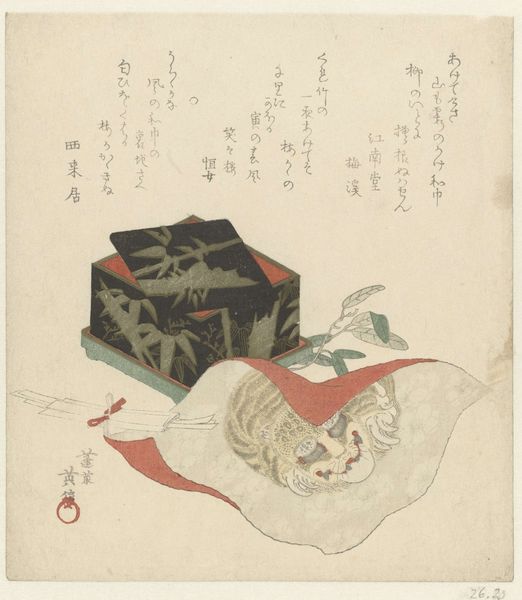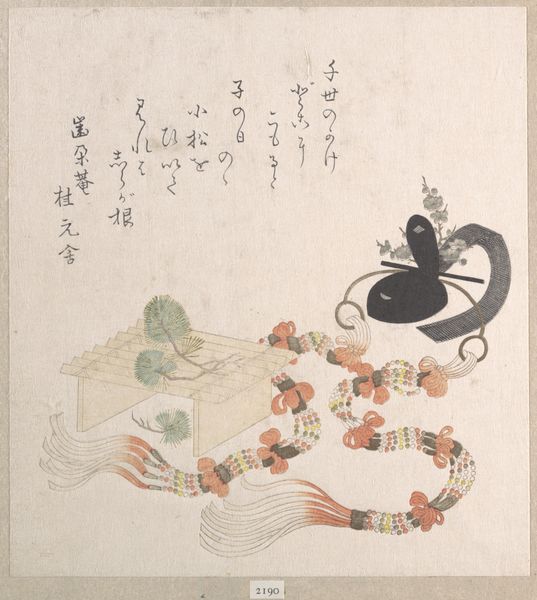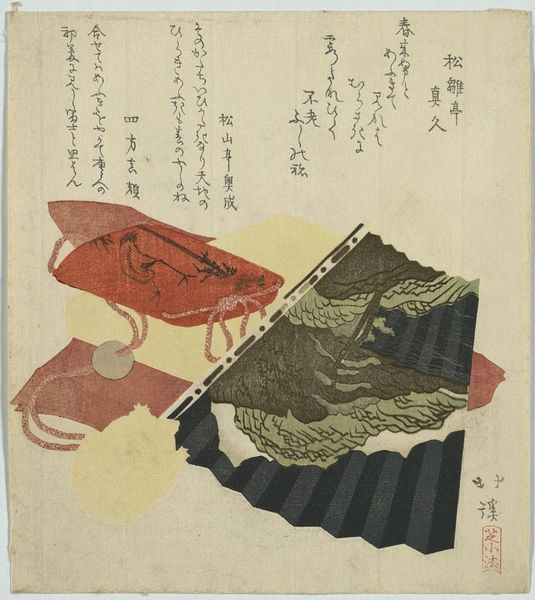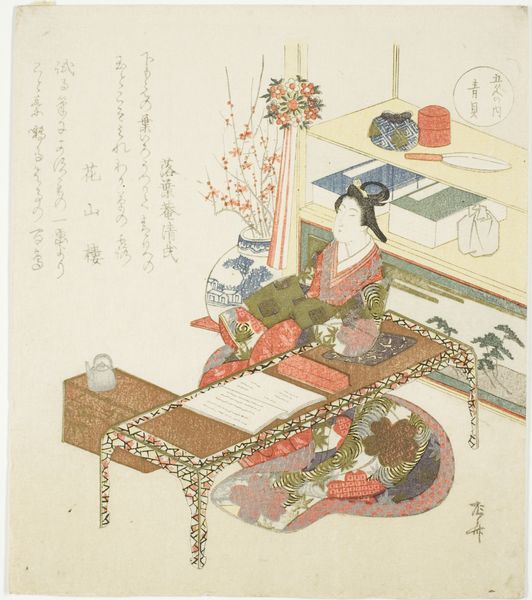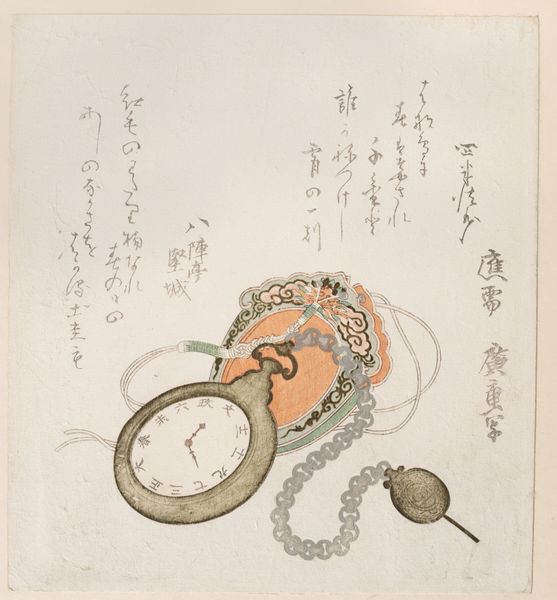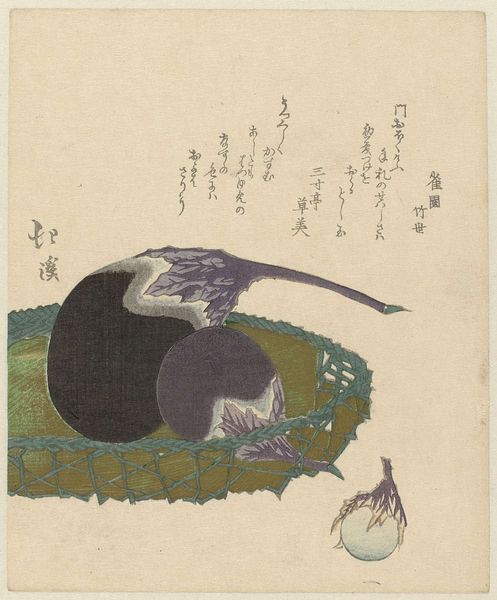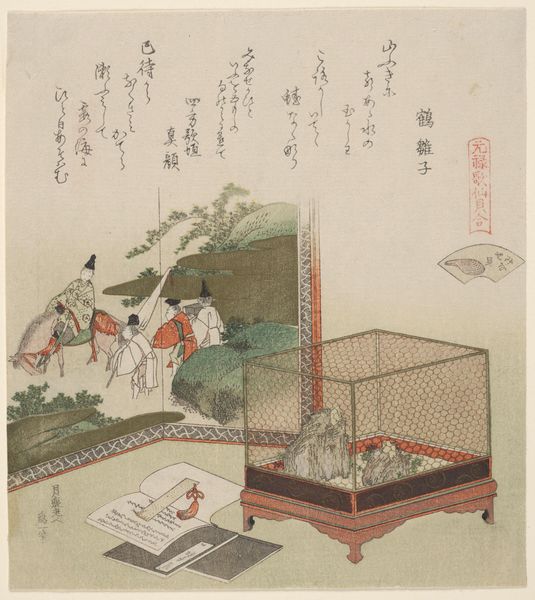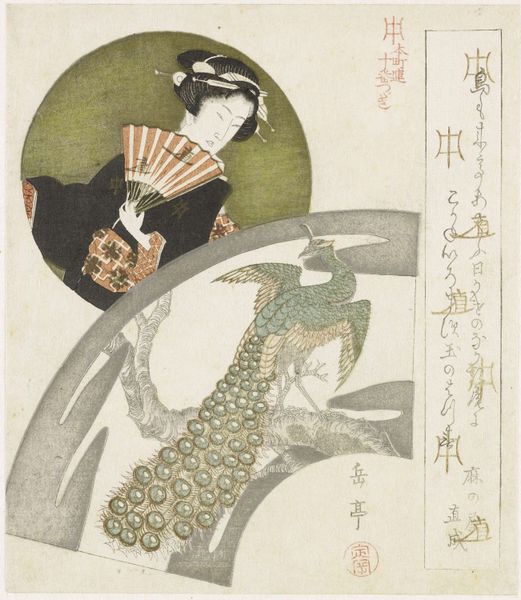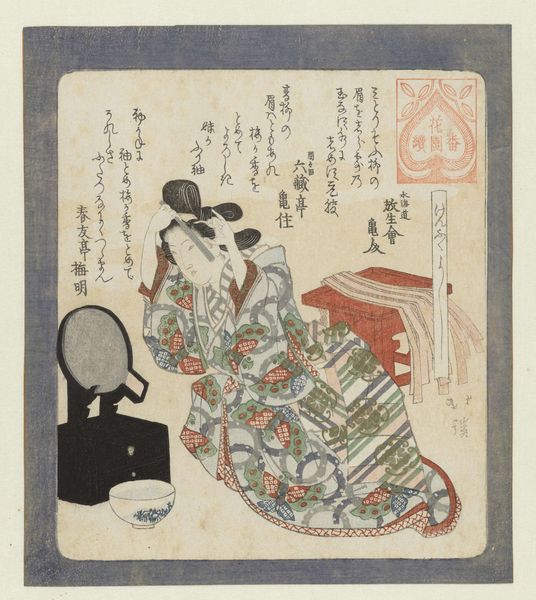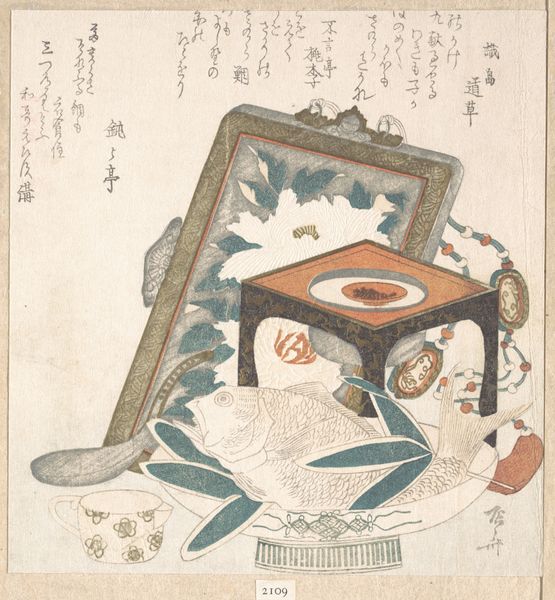
Episode 73 (Nanajusan dan), from the series "Tales of Ise for the Asakusa Group (Asakusagawa Ise Monogatari)" c. 1812
drawing, print, woodblock-print
drawing
water colours
asian-art
ukiyo-e
woodblock-print
Dimensions: 21.1 × 18.3 cm
Copyright: Public Domain
Editor: Here we have Kubo Shunman’s “Episode 73 (Nanajusan dan), from the series 'Tales of Ise for the Asakusa Group (Asakusagawa Ise Monogatari)',” a woodblock print and drawing created around 1812. There's this almost dreamlike quality to the piece; a rabbit pounding mochi in a mortar, seemingly on a handheld fan. What catches your eye most about this work? Curator: For me, it’s about unpacking the production process. Look at the woodblock print – the labor involved in carving those blocks to achieve this level of detail! It points to a whole workshop ecosystem and the social context that supported this form of artistic production. Do you think the materials used were deliberately chosen for their symbolic or economic value? Editor: That’s interesting. I hadn’t really considered the economics. Maybe the relative affordability of woodblock printing allowed for wider distribution and consumption of art at the time? Curator: Precisely! Think about how that contrasts with, say, a unique painting on silk intended for a wealthy patron. Woodblock prints democratized art, making it accessible to a wider audience and influencing popular culture. Also, the choice of depicting everyday objects and mythical subjects. The way it blends both highlights the connection to social narratives that these images facilitated among common people. The tales depicted probably spread ideas. Editor: So, examining the materiality and production allows us to understand the social reach and cultural impact of the work beyond just its aesthetic qualities? Curator: Exactly. It's a shift from simply admiring the artist's genius to understanding art as a product of its time, shaped by economic forces, available materials, and networks of labor. Editor: That's really insightful. It makes me think differently about how we define "art" and who it’s really for. Curator: Indeed! Understanding art through the lens of materials and processes unveils new layers of meaning and social relevance.
Comments
No comments
Be the first to comment and join the conversation on the ultimate creative platform.
